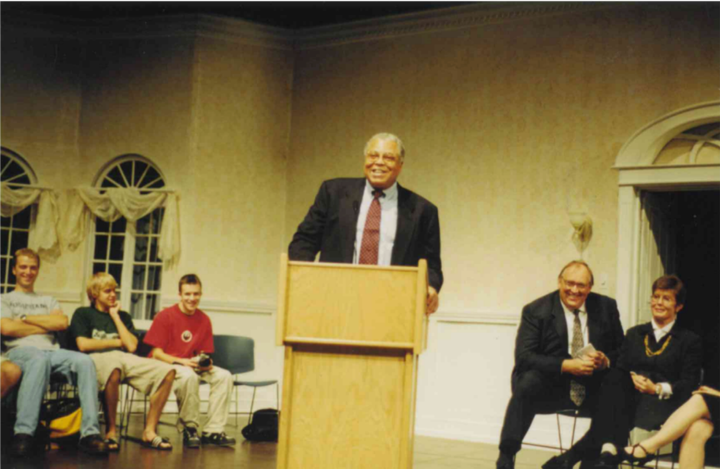After Las Vegas shooting, campus reviews active threat procedures
SHAUNA PAULI
sdpauli16@ole.augie.edu
Last week, a gunman opened fire on the Route 91 Harvest, a country music festival in Las Vegas. The gunman claimed the lives of 58 people and injured another 489 people.
In light of this tragedy, many are wondering what Augustana University Campus Safety would do in a similar situation.
“I think when you’re talking about active threat scenarios, probably what you want look at is how the university is preparing for that, what steps we have in place, and what you do if you are found in that scenario.”
Tupper said Campus Safety officers train with the Sioux Falls Police Department every year to prepare for active threats. In the exercises, a campus map is spread out on a table and the officers are presented with “real world scenarios.” From the exercises, officers figure out “what assets they would bring, who would be in charge and what each person’s role would be,” Tupper said.
The purpose of the joint training is to familiarize the SFPD with the campus, since it will most likely be the first one to respond to an active shooter situation, Tupper said.
The goal of the Campus Safety officers is to get students away from the threat, and the goal of the police officers is confront the threat as soon as possible.

Students are allowed to store guns and ammunition in a back storage room somewhere on campus, as long as they first check in with the Campus Safety. The university allows this primarily because hunting is a common pastime in South Dakota.
Students are allowed to check out their firearms as they please, but they are required to transport the weapon in a case, so “there is not somebody carrying a gun into a building,” Tupper said. If a student does not have a gun case, Campus Safety has several that students can use, Tupper said.
Campus Safety officers themselves do not carry guns, but Tupper said officers still have a responsibility to confront the threat until the SFPD arrive.
“Generally, once [shooters] have been confronted with a uniformed threat, they do usually one of two things,” Tupper said. “they either stop and they barricade themselves somewhere or they take their own life. Either way, our goal is to get the threat to stop what they are doing.”
During an active shooter situation, safety officers are trained to activate their car sirens as a way to intimidate the threat and buy Sioux Falls police more time to arrive on the scene.
“It is a complicated situation when you are telling officers to go into a gunfight with a baton and [pepper] spray,” Tupper said. “I do not want my officers getting killed, but we also know that we’re here to try to save as many people as we can.”
Campus Safety officer Becky Larson said she feels prepared to handle an active threat situation.
“We have had some meetings about the active shooter thing and I know that Rick has a plan in place,” Larson said.
Each campus safety vehicle has a “go-bag,” which holds campus building maps and keys to each building, Larson said. In an active shooter situation, the first campus safety officer to respond to the threat takes the bag and explains to other officers where to go, or if the police are already on the scene, campus officers would accompany the responders as they confront the threat.
To prepare for the threat of an active shooter, Larson said officers attend training classes at Augustana and other universities.
While she feels prepared, Larson believes there is always room for improvement.
“I guess we could always have more training,” Larson said. “We have a lot of new officers, probably three or four new officers, and I do not know if they have actually had any active shooter training. The people that have been here for a while, we kind of know the protocol and all that, but I would encourage training for the new people.”
Psychology professor Casey Trainor said he feels able to react appropriately if a situation arose while he was teaching.
“There’s a plan in place,” Trainor said. “We’ve just installed locks in all the classrooms in the Madsen Center, and we’re aware of the steps we’re supposed to take in those situations. I hope it never comes to that.”
Tupper said all faculty have been encouraged to learn how to lock the door to every classroom they are in throughout the day.
Sophomore and Granskou Viking Advisor Megan Lindely said she feels safe on campus, but she admits that anything could happen anywhere.
“We get to live in this really cool, weird place in the Midwest where stuff like Las Vegas does not happen, or we assume it doesn’t happen,” Lindely said. “I guess that I feel safe maybe in the sense that I can comfort myself thinking that doesn’t happen here. It’s easy to rationalize that nothing is going to happen to me here, so it’s easy to feel safe.”
She also said that her VA training makes it easier for her to understand things and is a good foundation for handling chaos.
“Nobody plans that they are going to a concert and it is going to be the next mass shooting, but unfortunately it happens,” Tupper said.
He says that he challenges people to walk through the “what-if” situation, whether people are traveling or staying local.
“It is important to know your exits and have an idea of where to escape to, if running from the threat is necessary,” Tupper said. “When you get challenged with crisis, your brain kind of goes to mush, but people will revert back to what they thought about before. It’ll save lives.”



